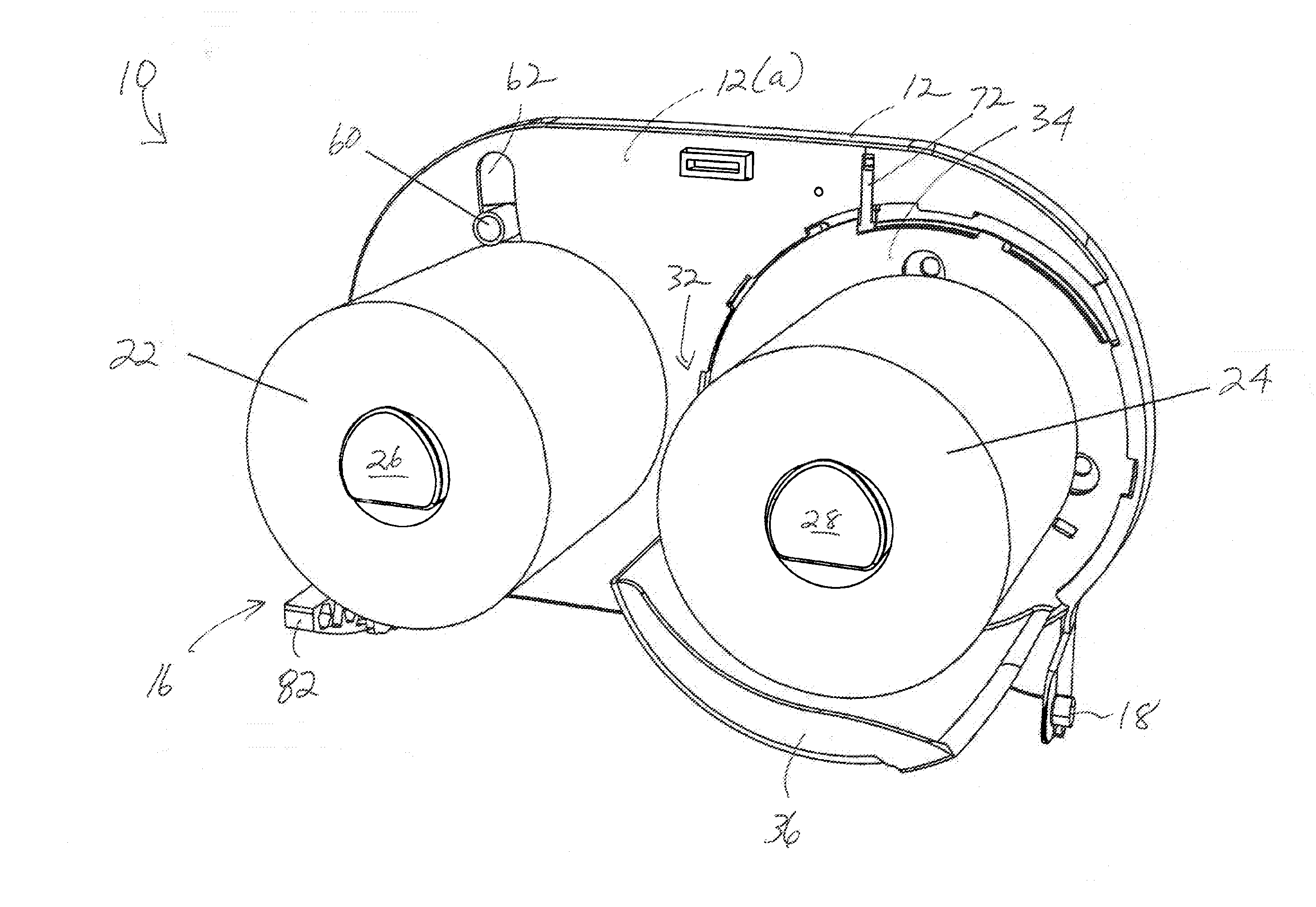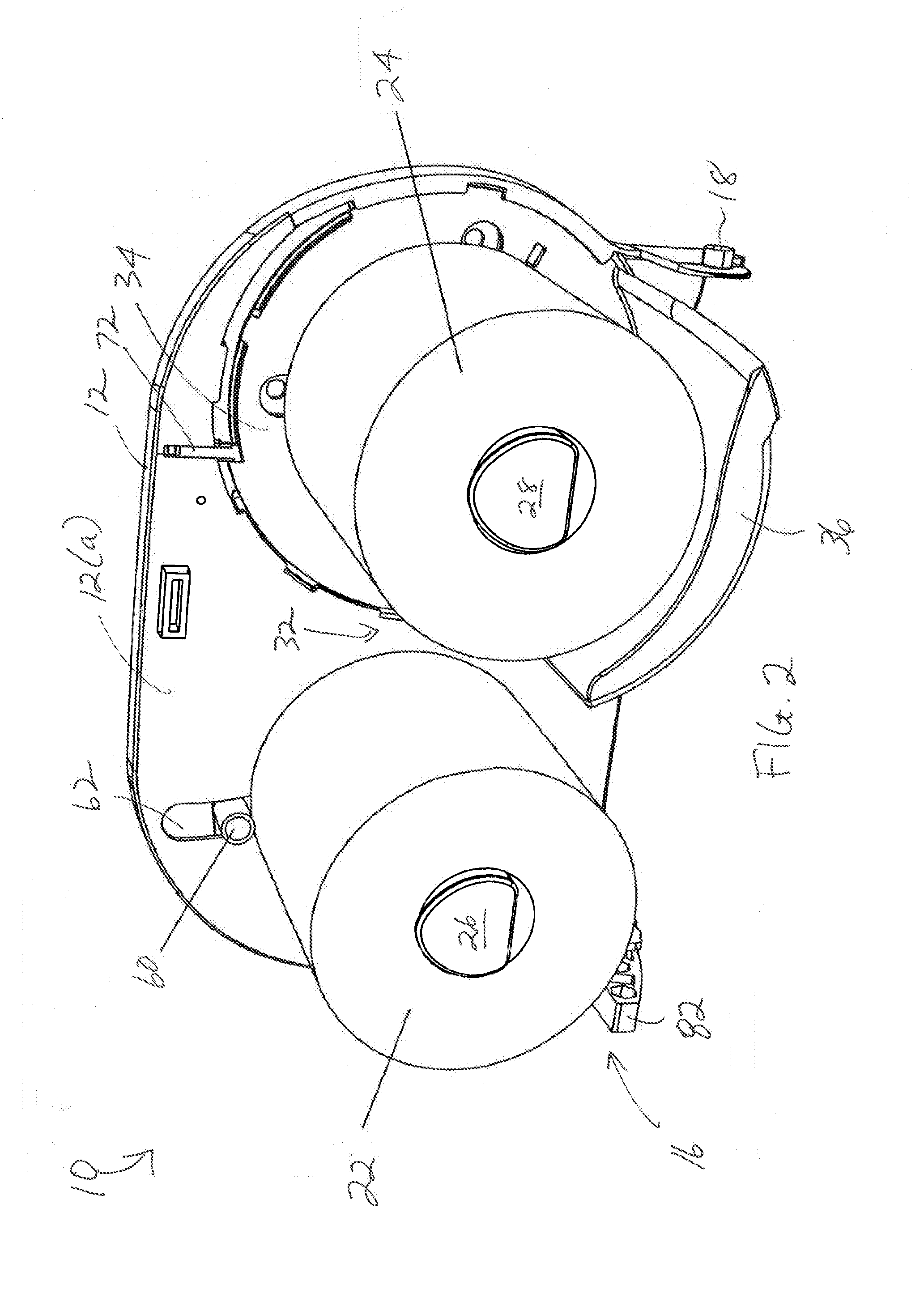Reset linkage assembly for blocking shield of multi-roll paper dispenser
a technology of multi-roll paper dispensers and linkages, which is applied in the direction of mechanical control devices, process and machine control, instruments, etc., can solve the problems of limiting access, unsanitary users, and thus unwelcome users, and achieve the effect of reducing consumer apprehension and increasing the likelihood that a dispenser will contain a usable amount of paper
- Summary
- Abstract
- Description
- Claims
- Application Information
AI Technical Summary
Benefits of technology
Problems solved by technology
Method used
Image
Examples
Embodiment Construction
[0025]The present invention is directed to a linkage assembly that is pivotal along a first axis of rotation to cause movement, e.g., rotation, of another object along a second axis, e.g., a second axis of rotation, that is preferably substantially orthogonal to the first axis of rotation. The linkage assembly will be described with respect to a multi-roll toilet paper dispenser having a shield that blocks access to a reserve roll of paper until substantial exhaustion of a primary roll of paper. It will be appreciated however that the invention may be used with other types of dispensers and may also be used with other systems altogether. Thus, the invention is not limited to the dispenser described herein and it should therefore be appreciated that the dispenser represents merely one exemplary operating environment for the present invention. Additionally, the components of the linkage assembly will be described relative to their interaction with the components of a multi-roll toilet...
PUM
 Login to View More
Login to View More Abstract
Description
Claims
Application Information
 Login to View More
Login to View More - R&D
- Intellectual Property
- Life Sciences
- Materials
- Tech Scout
- Unparalleled Data Quality
- Higher Quality Content
- 60% Fewer Hallucinations
Browse by: Latest US Patents, China's latest patents, Technical Efficacy Thesaurus, Application Domain, Technology Topic, Popular Technical Reports.
© 2025 PatSnap. All rights reserved.Legal|Privacy policy|Modern Slavery Act Transparency Statement|Sitemap|About US| Contact US: help@patsnap.com



